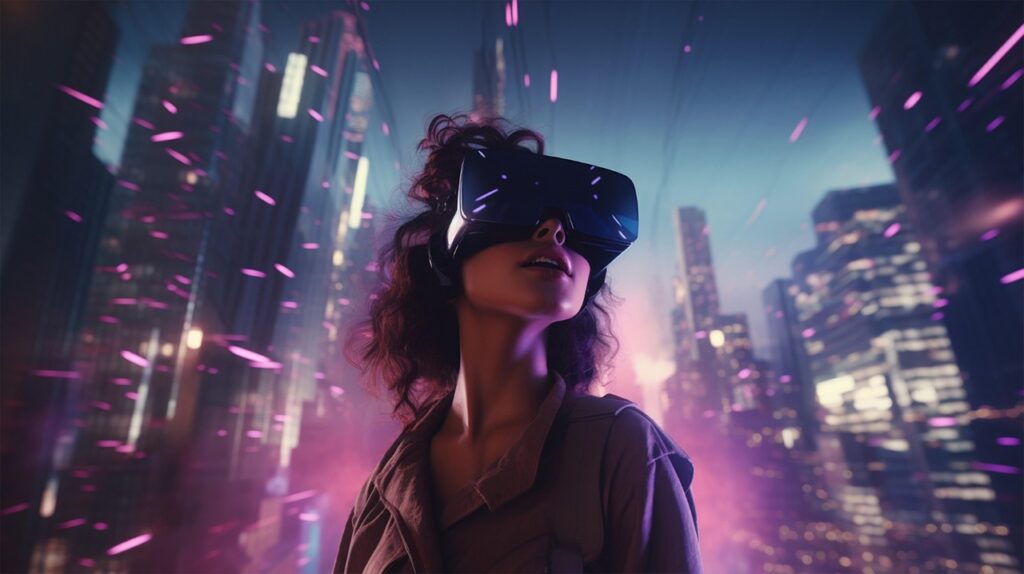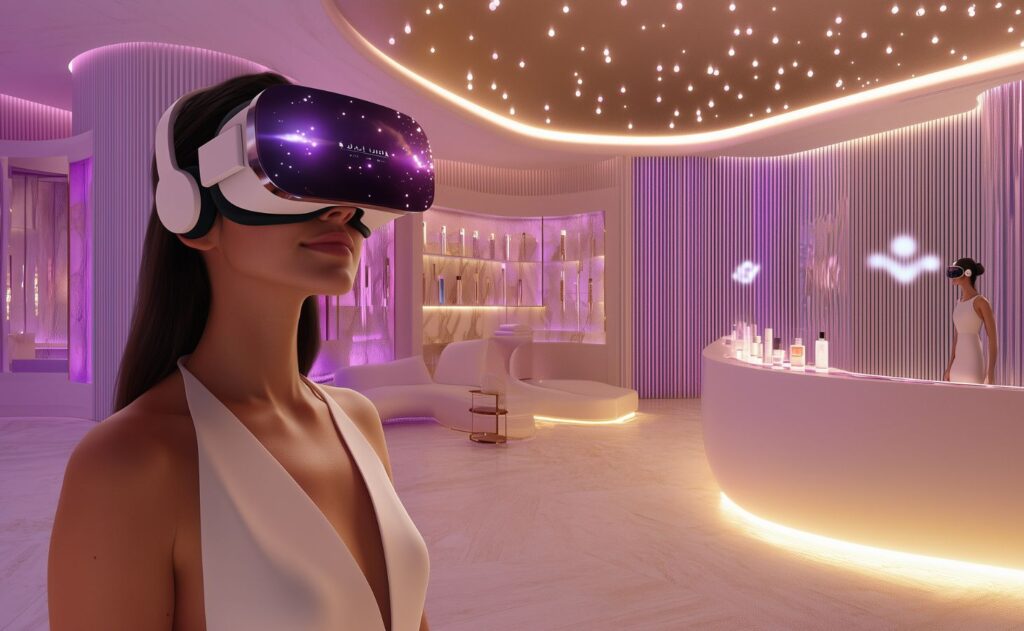Interactive murals transform how we interact with spaces in today’s tech world. They are used in offices, museums, events, and marketing to engage people and promote brands. These walls create memorable experiences and attract attention. This blog post explores many uses, benefits, and technologies of interactive walls.
What is an Interactive Wall?
Digital walls are an high-tech surface designed to respond to user interactions such as touch, gestures, or sounds. An interactive wall transforms physical spaces into dynamic, immersive environments by seamlessly integrating sensors, high-resolution displays, and sophisticated interactive software. Imagine walking into a museum where a seemingly ordinary wall comes to life with vibrant displays as you approach, providing detailed information and interactive exhibits with a touch or a gesture. This is the magic of interactive walls. They offer a unique blend of digital and physical interaction, making experiences more engaging and memorable.
How does an Interactive wall work?
Digital walls combine several advanced technologies, seamlessly integrating hardware and software to create responsive and engaging experiences. Here is a deeper look into the key components that make this possible:
- Sensors: Interactive walls have various sensors that detect and respond to user inputs. These can include touch sensors, motion sensors, and even audio sensors. The sensors capture user actions and relay the information to the processing unit.
- Displays: High-resolution displays are crucial for presenting content. Whether LED, LCD, or projection-based, these screens are designed to be visually appealing and responsive to user interactions.
- Interactive Software: The backbone of any interactive wall is its software. This software processes the data from the sensors and determines the appropriate response, whether it’s displaying content, playing a video, or triggering a specific function. Advanced software can even personalize interactions based on user behavior and preferences.
Integrated systems ensure that every part of an interactive wall works together smoothly, creating a natural and captivating experience. When you touch the wall, everything responds seamlessly, making your interaction feel effortless and enjoyable.
What are the different applications of interactive walls?
Interactive walls enhance user experiences across various sectors, including education, retail, healthcare, and corporate settings. Digital walls have different applications including:
1. Interactive Wall Art
Interactive murals blend traditional art with technology. They often use sensors or motion detection to respond to viewers’ presence or movements. Interactive wall art can vary from abstract visuals to stories that change based on how viewers interact. For example, at a contemporary art gallery, an interactive wall art installation invites visitors to touch or gesture in front of sensors. As viewers interact, vibrant colors flow and transform, creating a dynamic visual experience that evolves with each interaction.
2. Interactive Video Walls
Interactive walls comprise multiple high-resolution screens and are used for visual storytelling and engagement. They can display a wide range of content, from advertisements to immersive digital experiences. Interactive features may include touch-sensitive screens, motion sensors, or facial recognition technology. In shopping malls, interactive video walls are digital signs showing brand experiences and interactive ads. People can use touchscreens to explore product features, watch videos, and purchase directly from the display.
3. Interactive Wall Games
Digital walls turn spaces into interactive playgrounds by combining physical activity with digital gaming. Using motion sensors or cameras, interactive wall games detect and translate user movements into gameplay actions. These games range from simple motion challenges to immersive experiences encouraging teamwork and cooperation. For instance, at a museum, an interactive wall game challenges young visitors to jump, dance, and move to control on-screen characters, promoting coordination and problem-solving in a fun way.
4. Interactive LED Wall Experience
LED walls offer vibrant displays and immersive storytelling. They often include touch-sensitive surfaces or motion-tracking technology, allowing users to interact directly with the displayed content. Whether in educational exhibits or marketing campaigns, these walls offer endless possibilities for engagement and creativity.
5. Interactive Light Wall
Digital walls use LED lights and sensors to create captivating visual effects that respond to user input. Triggered by touch, sound, or movement, interactive light walls transform spaces into dynamic environments that captivate viewers. They are popular in entertainment venues, retail stores, and public spaces, enhancing the atmosphere with exciting lights and mesmerizing patterns that sync with the environment, such as a nightclub reacting to music beats.
6. Interactive Selfie Wall
Designed for social media enthusiasts, Interactive walls for selfies provide visually engaging backgrounds for photos and videos. They may include LED lights, projection mapping, or interactive elements that respond to users’ poses or gestures. Interactive selfie walls encourage user-generated content and can boost brand exposure at events, retail spaces, and promotional campaigns.
7. Interactive Wall Decor
Interactive wall decor combines aesthetics with interactivity to enhance interior spaces. Interactive wall decor transforms static walls into dynamic focal points using technologies like LED lighting or projection mapping. For example, in corporate office lobbies, visitors can interact with touch-sensitive panels to customize colors and animations, creating a personalized and engaging experience.
8. Interactive Wall Murals
Digital walls merge traditional art with digital interactivity, offering viewers unique and immersive experiences. They often reveal hidden elements when touched or triggered by motion, engaging audiences in storytelling. Ideal for public spaces or educational settings, interactive murals provide moments of joy and distraction, such as in hospitals where children can interact with characters and stories during their stay.
9. Interactive Wall Projection
These installations create dynamic displays on any surface by using projectors. They can include games, storytelling, or visualizations that respond to user input. At events like product launches, interactive wall projections engage attendees with real-time animations and demonstrations using gesture recognition technology.
How can businesses use an interactive wall experience?
Businesses can use interactive wall experiences in various scenarios to enhance engagement, improve customer experiences, and set their brand apart. Here are specific applications across different sectors:
Retail:
In retail settings, interactive walls can revolutionize the shopping experience by:
- Showcasing Products: Displaying product features and options interactively.
- Engaging Customers: Offering interactive promotions, games, and experiences to attract and retain shoppers.
- Enhancing Store Design: Creating visually stunning displays that enrich the store’s atmosphere.
Corporate:
For corporate environments, interactive walls bring a modern touch to office spaces and events by:
- Lobby Displays: Sharing engaging content about the company, upcoming events, or important announcements.
- Meeting Rooms: Enhancing presentations with interactive data visualizations and touch-responsive screens.
- Events and Trade Shows: Attracting visitors with dynamic displays that showcase products and services interactively.
Events:
At events, interactive walls can create lasting impressions:
- Exhibitions: Providing immersive exhibits that captivate attendees.
- Conferences: Enhancing speaker presentations with interactive elements.
- Brand Activations: Creating memorable and shareable experiences for event participants.
Museums and Exhibitions:
In cultural and educational settings, interactive walls can:
- Engage Visitors: Using interactive storytelling to bring historical events and stories to life.
- Educate Visitors: Offering hands-on learning experiences through interactive displays and games.
Education:
In classrooms and educational institutions, interactive walls facilitate:
- Interactive Learning: Presenting educational content in engaging ways, including interactive lessons and quizzes.
- Collaborative Projects: Fostering teamwork through group projects and real-time interactive content creation.
- Classroom Management: Streamlining tasks like attendance and announcements to maintain an organized learning environment.
Healthcare and Wellness:
In healthcare facilities, interactive walls can support patient care and facility management by:
- Patient Education: Providing information on health conditions, treatment options, and hospital services through interactive displays.
- Wayfinding: Helping patients and visitors navigate complex hospital layouts with interactive maps and real-time updates.
- Therapeutic Uses: Creating calming environments in therapy rooms to aid patient recovery and mental well-being.
Interactive walls offer versatile solutions across diverse sectors, enhancing engagement, education, and overall user experience in innovative ways.
What are the Benefits of Interactive Walls for Businesses?
Digital walls offer businesses a dynamic tool to engage audiences and elevate brand exposure significantly. By leveraging touchscreens, gestures, or augmented reality, they create immersive experiences that captivate attention and foster active participation, enhancing brand loyalty and driving sales. They also excel at conveying product information and training materials engagingly. Here is why interactive walls are a game-changer for businesses:
- Enhanced Engagement: Interactive walls attract more attention compared to static displays. They prompt users to interact with content actively, leading to longer attention spans and deeper interest levels.
- Memorable Experiences: These walls deliver dynamic and immersive experiences that leave a lasting impression on users. This enhances brand perception and encourages repeat engagement.
- Interactive Learning: Interactive walls transform learning into an enjoyable and effective experience in educational settings. They present information interactively, helping students understand and retain knowledge better.
- Brand Differentiation: Businesses using interactive walls showcase innovation and a forward-thinking approach. This sets them apart from competitors and appeals to tech-enthusiast customers seeking cutting-edge experiences.
- Data Collection: Interactive walls gather valuable data on user interactions. This data provides insights into user preferences and behaviors, enabling businesses to refine marketing strategies and enhance user experiences.
- Boosted Sales: Interactive experiences drive higher customer engagement, increasing conversions and sales. Incorporating gamification and dynamic storytelling captures and retains customer interest, encouraging a deeper exploration of products and services. Interactive walls can display detailed product information, facilitate virtual try-ons, and offer personalized recommendations, making the shopping experience more enjoyable and effective.
Interactive walls represent a powerful tool for businesses aiming to create impactful brand interactions, drive sales growth, and gain valuable insights into customer behavior.
What is the Future of Interactive Walls?
Thanks to new technologies, the future of interactive walls is bright. AI will make interactions more intuitive and personalized, with better data analytics to improve user experiences. AR will blend digital and physical worlds, creating unique immersive experiences. Enhanced customization will let businesses tailor these walls to their brand and audience. As technology advances, interactive walls will be used in healthcare, education, hospitality, and more, becoming a common part of our daily lives.
How can Yord Boost Your Business with Interactive Walls?
Yord specializes in creating custom interactive walls that perfectly fit your needs. We’re experts in immersive technology and design interactive walls for a wide range of industries. With our interactive video walls, captivating light displays, and engaging wall games, we bring your space to life.
Step into the future with Yord’s interactive walls. Follow our blog for insights and contact us to bring your vision to life with interactive technology. The future of engagement is here!
👋 get in touch
By clicking the “send” button, I agree to the collection and processing of my personal data as described in the Privacy Policy.




